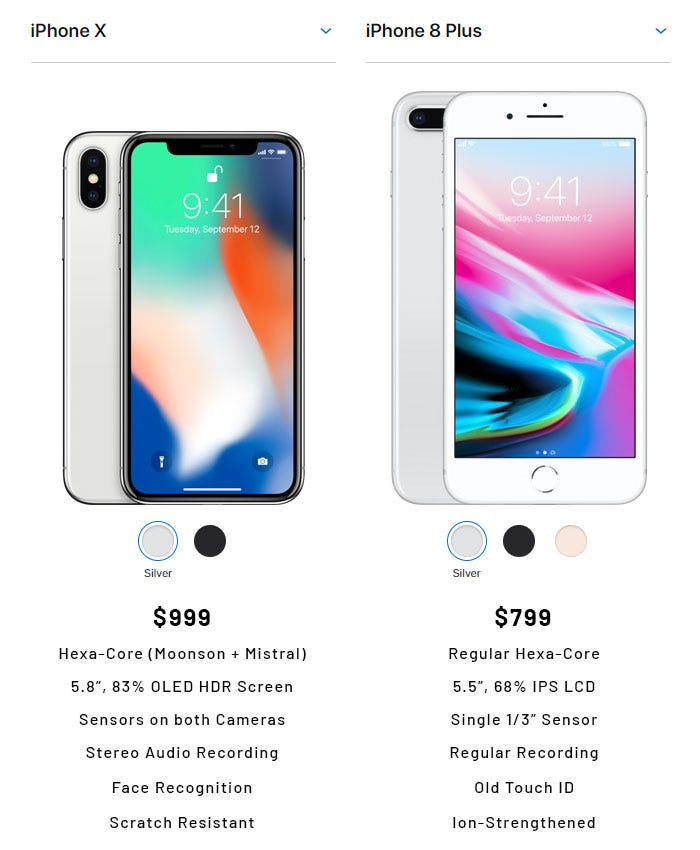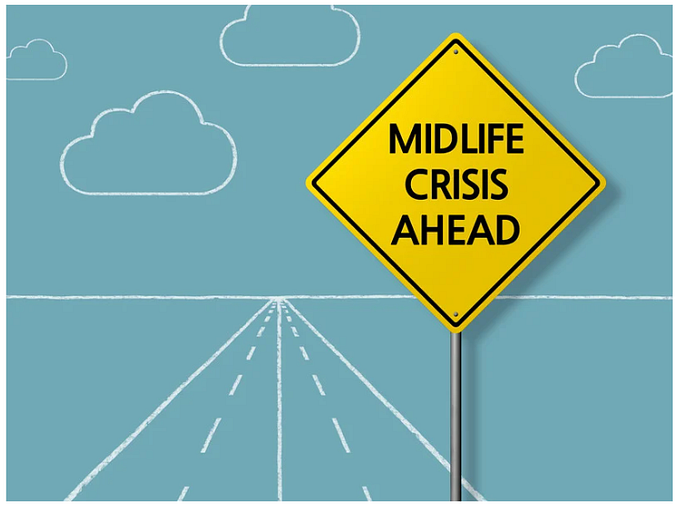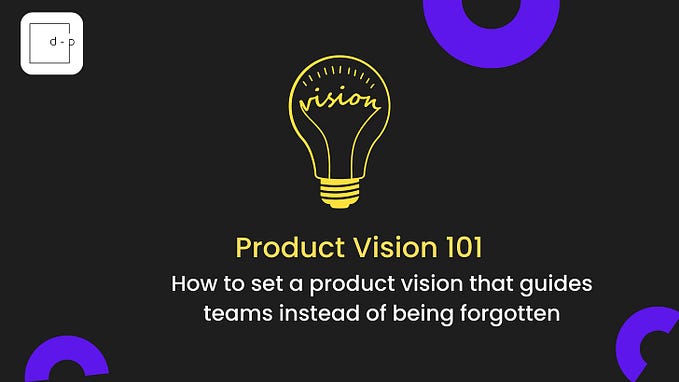UX Psychology #2: increasing conversions with the Decoy Effect
The cognitive bias that makes us proud of being made fools of.

Have you ever noticed that some fast food prices seem absolutely clueless? I mean, how come a medium Starbucks cup is $4 while an extra-large is $5? Shouldn’t it be twice as much?!
The funny thing is that most people feel like they have gamed the system when opting for the bigger size — as if they found a breach in the operations — but the fact is that the system has just gamed them.
Medium portions are not meant to be sold just like many iPhones are planned to flop. It’s a huge mistake to say the iPhone 5C was a failure — although it did fail to sell—because that’s exactly what Apple wanted from it.
Today we’ll talk about the Decoy Effect, also known as the Attraction Effect, an intriguing cognitive bias that uses bad products to make expensive ones seem much cheaper than they actually are. You are gonna love this, I promise. :)
What is the Decoy Effect?

Originally, a decoy is an artificial duck used by hunters to lure real ducks into gun sight — just like Starbuck’s Tall cups only exist to make you by Ventis.
Behavioural Economists say a decoy is a middle option that is asymmetrically bad compared to your main offer. A perfect example would be the iPhone 5C, which was the decoy of the high-end 5S back in 2013. Let’s see how things were before its release:

For $649, an iPhone 5S wouldn’t give you much more than its $449 predecessor. I mean, it had the great Touch ID (the reason I bought it) but everything barely mattered to the average user. (Not to Samsung was catching up in terms of innovation, and both the 4S and the 5S looked strikingly similar to be worth the price difference.)
This was the perfect time for you to save $200 if you were not one of those crazy Apple fans, right? Especially if you lived in a developing country, where the difference easily amounts to thousands.
But then came a third model, the iPhone 5C, to shatter your dreams: costing a whopping $549 — only $100 below the high-end 5S — it was completely made out of plastic, lacked the coveted Touch ID, and also displayed unique colours that screamed to the world:
“LOOK, I OWN A SHITTY PLASTIC IPHONE!!!”

See how having three phones changes the landscape: if before this you could save $200 opting for the 4S, now you have a new model that makes the 4S feel even more outdated and meaningless, thus, completely removing it from your buying decision. Now your options boil down to saving $100 on coloured plastic crap or buying the best iPhone in the world.
The iPhone 5S was no longer $200 more expensive but $100 more affordable.
As defined earlier, the 5C was a decoy because it’s a middle option that was clearly superior compared to the low-end model, but also so bad compared to the high-end one that you could literally identify it by its bright colours. Showing a 5C in public was the same as telling everyone: “I’m so poor, look at my unique colourful plastic phone! I couldn’t spend $100 on 5S, guys!”
You see Apple did all it could to ensure having a 5C sucked (social-wise), but since carrying a 4S would also suck (tech-wise), the 5S becomes your only choice. They convinced us the most expensive phone was actually a steal.
Don’t mistake Decoys for the Centre Stage Effect!

I’ve seen many people say that expensive products like the iPhone X are decoys because they make people buy cheaper models like the 8 Plus, but that’s a huge mistake. (A reasonable one, but still a mistake!)
First, we must remember that decoys must be asymmetrically bad by definition and that’s definitely not the case with the iPhone X. We are talking about a top-notch model with a Super Retina Screen, Infinite Display, face recognition, better camera, and other features the 8 Plus could only dream of.

If anything, the X was asymmetrically BETTER than the 8 Plus, so why people were buying the 8P instead?
Probably because of the Centre Stage Effect (or the Middle Option Bias), which makes people buy middle options among products that scale evenly concerning price and quality. Check it out:
We had the iPhone 8 ($449), the 8 Plus ($799), and the iPhone X ($999).* Those big price differences implied there’s the worst, the average, and the best model—and their features backed this perception since it got better the more you paid for it — thus making the buying process pretty rational.
What’s the problem with rationality? Well, many (if not most) people don’t like to show off buying the best stuff (X), but they definitely don’t want to be embarrassed by having the worst either (8), thus putting a spotlight on the Centre Stage where the 8 Plus lied with average features for a $200 price cut.
People only bought the 8 Plus because it was reasonably inferior. If Apple priced it at $50 or $100 less maximum, people would feel stupid since they could get the latest big thing dropping a single Franklin bill at the table.
So yeah, the Decoy Effect and the Centre Stage are pretty similar on the surface — i.e., a product is favoured due to a price comparison — but their conditions are radically different. Fail to grasp it and you may end up turning your latest release into your greatest failure!
How to trigger the Decoy Effect?
I forgot to say this, but one reason people mistook the iPhone X for a Decoy is because it had the highest price an iPhone ever had up to 2017.
But decoys are not about price. Decoys are about asymmetrically quality and price difference, as The Economist does with its subscriptions:

Huge price difference, huh? But did you notice that the price is not the only problem here? I mean, one of the options is obscenely expensive and dares to offer you less than the best offer. That’s an absolute disgrace! (Or an asymmetric disgrace, as I’ve been saying.)
Although pricing is definitely an important aspect of Decoys, there’s a huge difference between having a higher price (X vs 8 Plus) and having a bad price. Prices are asymmetrically bad when unfair, not when simply superior.
Don’t mistake asymmetry for absurdity
With that said, here’s how you can make a Decoy:
- You must have 3+ competing offers;
- Pick a favourite among those (the high-end offer);
- Make one of those offers absolutely inferior (the irrelevant product);
- Then make one of your products better than the worst (the Decoy);
- But also make it inferior to your favourite;
- Now price your decoy similarly to your favourite offer.
Oh, you could also make the decoy more expensive than your main offer like The Economist does, but don’t mistake asymmetry for absurdity, please!
I mean, it would be fine if paper+digital was $30 and paper-only was also $30 or even $40 — they could argue it’s expensive to mail it or that they wanted online readers, for instance — but the same thing for twice the price, buddy? That’s blatant trickery!
Closing thoughts
The buying process is not rational, so don’t try to make it unless its part of your Product Strategy.
The Decoy Effect is really powerful at making people ignore what best suits their needs and focus on what feels more advantageous at the moment, so be careful as it may end up frustrating your customers on the long run. A competitor may spot an opportunity to price more fairly and take you down, for instance.
And no, that doesn’t mean Decoys were made to trick people. Anyone who has run a business knows how costly it is to keep things running smoothly, so you could use it to nudge people towards good offers rather than unfair ones.
Whatever you do, keep in mind that offering a good user experience is the secret of all the most successful business, so be kind to your customers’ hearts and their wallets will be kind to you.
And if you are unsure of how to craft a Decoy, leave a comment here and I’ll be more than happy to offer you some tips! :)
Seeking a mentor?
Starting a new career is not easy: our lack of experience is hit by an insurmountable wave of content that makes us feel like we need to memorise an encyclopedia before working. It’s an awful feeling, I know.
I’m no mentor, but having accomplished a thing or two as a designer, writer, and digital marketer (and now working as a product designer at fashion giant), I know a thing or two about career shifts in order to aid you.
How about you follow me here or connect with me on LinkedIn so we can take this conversation forward? I’ll be happy to provide you with any assistance you might need! : )








